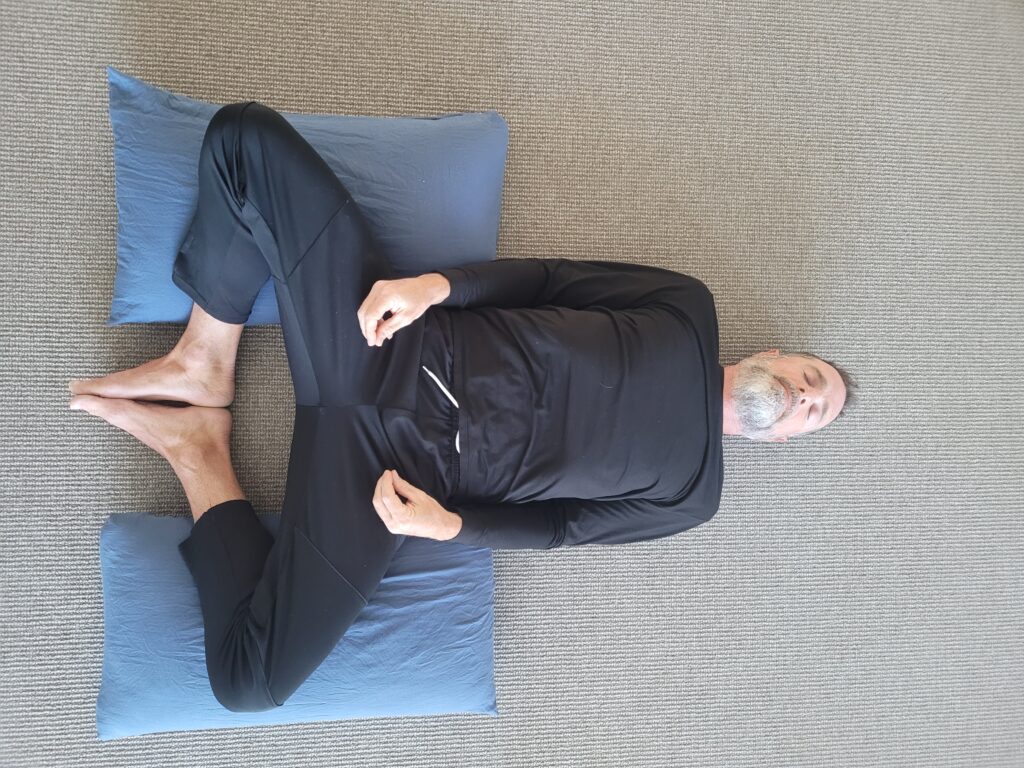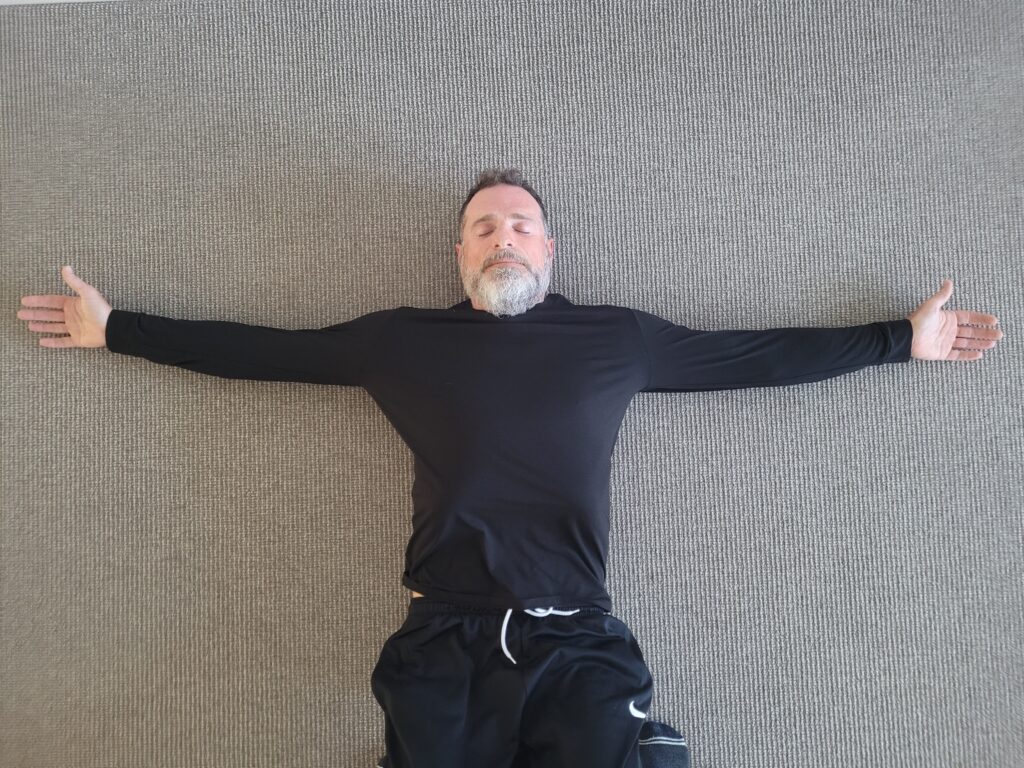Here’s a question: How do we create more awareness around nasal breathing? The answer? By practicing nose breathing of course… and by acquiring experience & correct knowledge.
Every moment is a new beginning… start each breath with awareness!
Calmly and gently close your mouth, place your tongue on your top palate and start breathing through your nose in this current moment…
Starting or Learning something new usually requires intentional repetitive practice. When we master a new skill or behavior consciously, we then progress toward consolidating the new skill or behavior habitually.
A simple way we can easily integrate nose breathing into our everyday life is to start and end each day with small amounts of conscious nose breathing, before sleep and after waking are perfect times, start with 3-5 full breaths through your nose… Progress to breathing with more awareness while sitting and definitely while chewing… Slowly try to integrate nose breathing into everyday life… Progress to walking and other low intensity exercises.
Initially it may feel strange or unusual if you haven’t brought attention to your breath rate or pattern before, that’s normal, when we try or attempt something new a level of discomfort or feeling unusual sensations in the body is to be expected, move onto nose breathing while moving, start with a low intensity exercise like Qi Gong, Tai Chi, jogging, rowing or cycling… Anything full body, rhythmic and cathartic, dancing is also a good option, just bring your awareness toward breathing rhythmically through your nose.
Of course, there are times in our life that we can, should or need to breathe through our mouth, its a very handy backup system that compliments the nose and it plays a very important function in our life, but not for regular everyday breathing, only during intense exercise, exhaustion and exertion should we breathe through the mouth… Or if we have nasal congestion or a biomechanical reason, such as a broken nose or deviated septum, the mouth should only be used as a back up system and as a last resort for breathing, otherwise your mouth and lips should stay closed most of the time, unless talking, putting food in, and of course, smiling, laughing and kissing!
Lips sealed closed. Tongue on top palate of mouth. Try to cover the top palate as much as possible with your tongue. Tip of the tongue touching the back of the upper teeth & the top bottom teeth.
Your jaw should be closed with your teeth slightly touching, but not clenched. This may not be comfortable or perhaps possible for some of you, depending on the structural development of your jaw, or the size of your mouth and tongue. Find a position that works best for you, one that closely resembles the suggested postures outlined above.
Make sure you can produce and use saliva during the breathing process– this will most likely happen naturally and as a by product of the technique.
This posture is not just to use during an intentional breath practice… It’s to be used in every conscious moment, keeping this jaw and tongue position automatically optimizes your respiratory function, lowers your heart rate, and it produces more nitric oxide for better nutrient, mineral and oxygen absorption.
What body position is most efficient, most effective and most comfortable for you is what you need to consider. I’m going to share the postures I personally use currently or have trialed in the past. I encourage you to adapt the suggestions to suit your unique body design so you can create a free flowing, full breath.
There are numerous variations of what posture you can place your body in, before we touch on that, let’s bring some awareness back to the environment we are existing & breathing in. Is the air clean, is there adequate air ventilation or air circulation? Are there any potential distractions that will disturb your practice? Is the temperature consistent? Rarely do we get the perfect conditions and environment at the times we desire. Consider preparing your practice for the best possible outcome by finding and scheduling a non negotiable sacred time each day. I do understand for some of you that can be a challenge to find the time.
Keep in mind, this is a breath practice, not a meditation practice. Finding the most suitable position is crucial. The most effective position to seek is one that allows for a full breath, one where the airways are open & free from obstructions or limitations, one that supports diaphragm movement, one that encourages flexion & alignment of the spine, one that allows the blood to circulate freely and a posture that is easily sustained and maintained throughout a practice.
Laying Flat vs Sitting Upright
If I was to follow the guidelines above, that simply suggests laying flat on the ground or floor. Sitting upright is certainly an option or possibility, what does however happen in this posture is that your spine is compressed and resisting gravity, potentially curved and non supportive of a still head position, and the lungs and stomach slightly limited in my opinion and unable to fill to their full potential. the head can also drop and shoulders fall in ( pending on each individual, conditioning & posture ) causing a slight restriction in both the airway and lung capacity or the ability for the diaphragm to fully expand or fill the lungs to absolute potential fatigue of the erector spinae.
Personally, I’d prefer to take out all those risks, by simply choosing to lay flat. I understand that some of you may have some body ailments or restrictions due to previous injuries or conditionings, and you may be physically or biomechanically unable to sustain laying flat on your back over a short or long time. I do strongly encourage you to attempt and persist with it for as long as possible, soon enough, this posture, combined with the breath technique, will help you to re-align your spine and re-calibrate your posture. When we give our best effort, our best effort naturally gets better!
Another advantage of laying flat is that blood circulation flows more freely and you can elevate your elbows so that your rib cage is already slightly raised & elevated, and less effort is then required to breathe… Less is more, when you find a rhythmic harmonic pattern that resonates with your body, you may be surprised how much air you can inhale into your lungs and with very little physical effort required. Our body loves rhythm and harmony, so does the breath… It doesn’t necessarily want effort, push and grind all the time…. that’s activating the fight/flight/freeze stress response and nervous system…We don’t want to add tension…We’d prefer to go into a deeper state of calmness and peace, the rest and digest parasympathetic nervous system… And we do this by starting in a relaxed peaceful tranquil state…
Adapt and adjust your posture at any time, I encourage you to find the posture that’s most comfortable and works best for you, there’s no rules here… Just free will…
Let me show you some of the postures I use.





Keeping your legs elevated ( the reverse sitting position ) is something you can apply, in fact use anything that aids in having a more comfortable and enjoyable experience. This position is good way to stimulate the parasympathetic nervous system. and in time actually contributes to resetting the nervous system completely. Applied as a 30 minute daily practice for around 2 weeks can be very beneficial, and specifically for this Progressive Breathing Practice, it allows us to sink into a deeper state of inner peace and calm.
Some of you may need some lumbar or neck support, a rolled towel under the hips or a small pillow to support the head and neck usually will help, but in time, practising this breathing technique may help correct your spine and posture, and you may find you don’t actually need these extra props moving forward.



